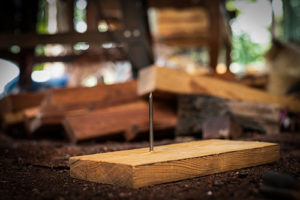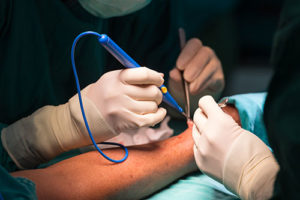Wound Care
A minor cut or scratch to your foot isn’t typically a cause for alarm. Some kinds of wounds on your feet, however, can become infected leading to other issues if left untreated. Perhaps you nicked your skin when trimming your toenails or found that those ill-fitting shoes have led to a blister bringing discomfort. While initially these issues may not call for concern, over time if you do not treat them promptly, they may not heal properly. More urgent issues such stepping on a rusty nail are more immediate cause for concern and should be treated immediately.
At Namen Podiatry we treat ulcerated and non-healing wounds, puncture wounds as well as offer podiatric wound surgery when required for more complex cases. Learn more below.
If you are a patient at risk for foot wound complications due to diabetes, working with Dr. Namen to understand how best to prevent wounds and the management of existing wounds is advised. This can include cleaning and careful inspection of the feet daily. Learn more.
Ulcerated and Non-healing wounds
Chronic ulcerated and non-healing wounds are worrisome as they fail to progress through a prescribed sequence of repair in a timely manner (usually anywhere between 4 weeks to 3 months) thereby restoring normal function and physiological health to the affected area. Typically, it is found that wounds that are slow to improve, or do not appear to improve at all, often suffer from some physiological impairment not due to a single, but multiple contributing factors such as infection, metabolic conditions, immunosuppression and even some medications or other medical treatments.
For example, sometimes wounds on the feet can become more challenging due to other ailments. While a blister in a healthy person most often requires a minimal treatment in order to heal, for someone with diabetes or who also has poor circulation or neuropathy, complications of such a simple problem can become much more dire. Some vascular disorders, autoimmune diseases and most notably diabetes, reduce feeling in the extremities and can suppress healing. This means a scratch or cut on the foot can ulcerate, become infected and potentially lead to amputation if not treated promptly.
That’s why if you have a sore or wound that seems to not go away, or goes away only to return and worsen, you should schedule an appointment with the team at Namen Podiatry to take a look. First and foremost, treatment of ulcerated and non-healing wounds starts with getting on the right road to recovery as soon as possible. The faster the healing, the less chance for an infection or worsening condition. Although treatment will vary from patient to patient, Dr. Namen can explore whether orthotics, debridement or perhaps a course of topical or oral anti-biotics may be right for you.
There are several key factors in the appropriate treatment of a diabetic foot ulcer:
- Infection Prevention
- Off-loading, or taking the pressure off the area
- Debridement, or removing of dead skin/tissue
- Topical treatment of medication/dressings
- Assignment of proper footwear to reduce friction/pressure
- Restore adequate blood flow through health management strategies
Steps to take to help prevent infection:
- Manage blood glucose levels
- Clean the wound daily
- Use a wound dressing or bandage
- Avoid walking barefoot
Remember… not all ulcers are, or can become infected, however proper and early treatment is important to reduce your risk. Dr. Namen and the team can help diagnose whether there is an threat for infection and prescribe what type a treatment program will be necessary.
 Puncture wounds
Puncture wounds
Sharp objects on the ground that go unnoticed when you are walking are particularly alarming as they can result in a puncture wound. Puncture wounds are the most common traumatic podiatric injury and are so concerning as the potential for harmful bacteria that often thrive in a low-oxygen environment. So too, the depth and severity of the wound can allow for pieces of debris to become lodged and trapped, leading to serious infection without proper cleaning and care. Skin necrosis, deep abscess formations and osteomyelitis are serious complications which can occur if wound treatment is inadequate or delayed.
If you have suffered a deep puncture wound to your foot (particularly one that has penetrated your shoe) it is important to seek medical care right away. It is possible you may require a tetanus booster shot if you haven’t received one in the last five to ten years. Even after an emergency care visit, a following up with Dr. Namen can help ensure your wound is clean and healing properly. With a thorough history, physical examination, and necessary imaging, the clinical insight of Dr. Namen and the team can help you avoid most complications.
 Podiatric Wound Surgery
Podiatric Wound Surgery
Most non-infected foot ulcers are treated without the need for surgery. If all other treatment methods fail, however, podiatric surgery may be prescribed. Dr. Namen can perform surgical treatment to remove pressure on the affected area. This can include shaving or excision of bone and/or correction of deformities, such as hammertoes, bunions, or bony bumps.
Healing time can vary from weeks to several months and depends on a variety of factors, such as wound size, location, pressure applied from walking or standing, swelling, circulation, blood glucose levels and quality of patient at-home care of the affected area.
